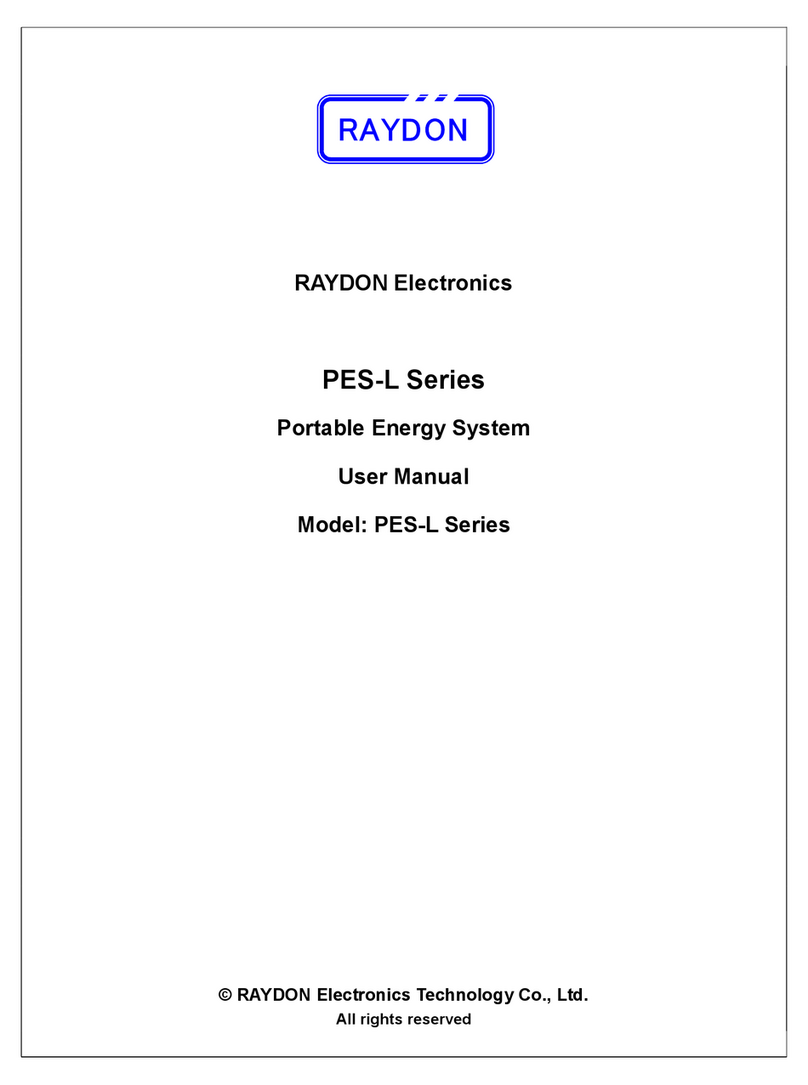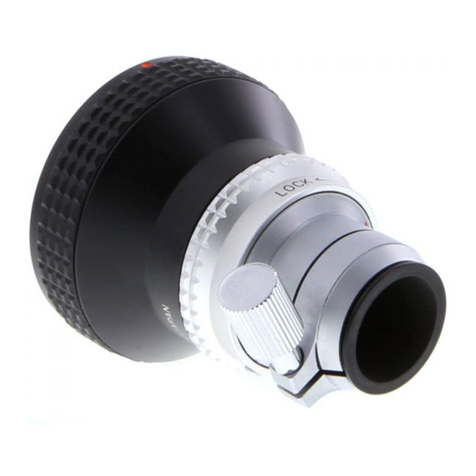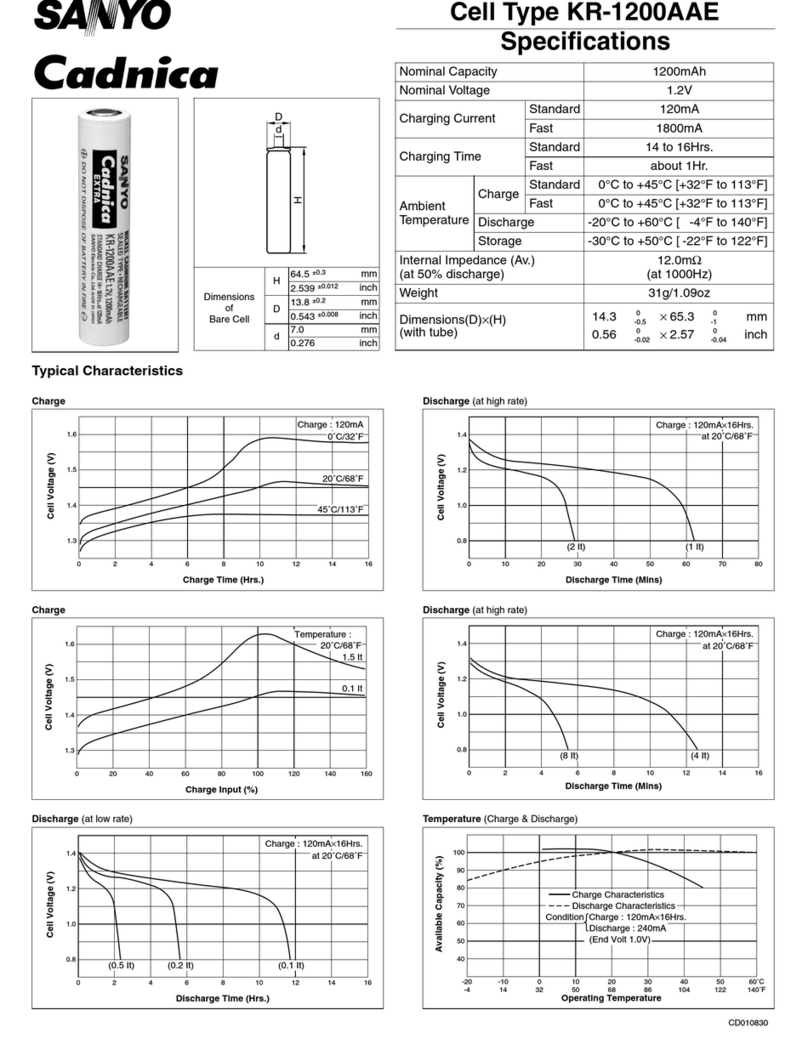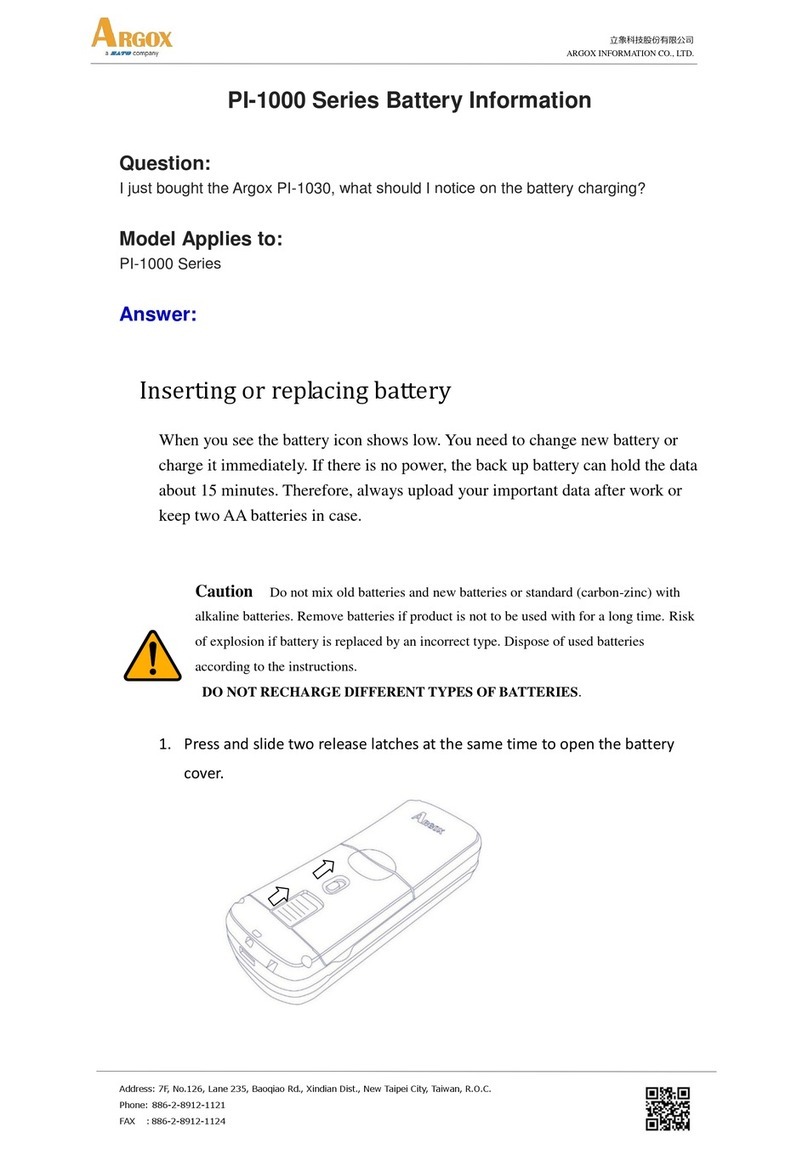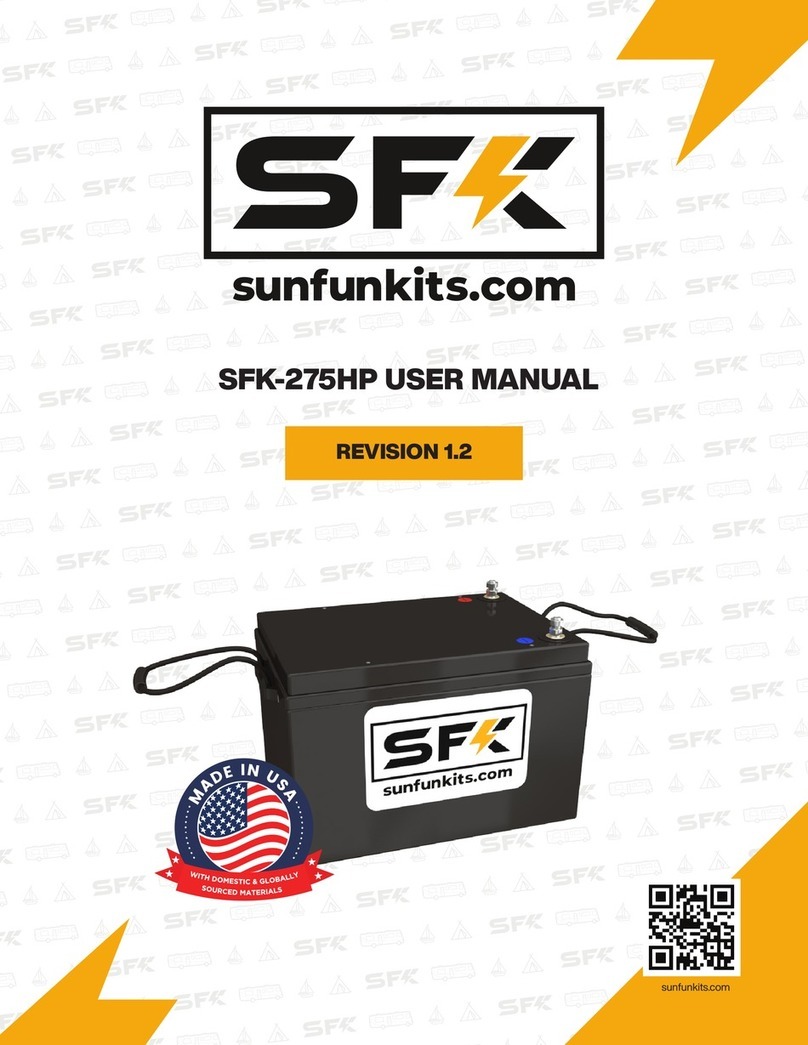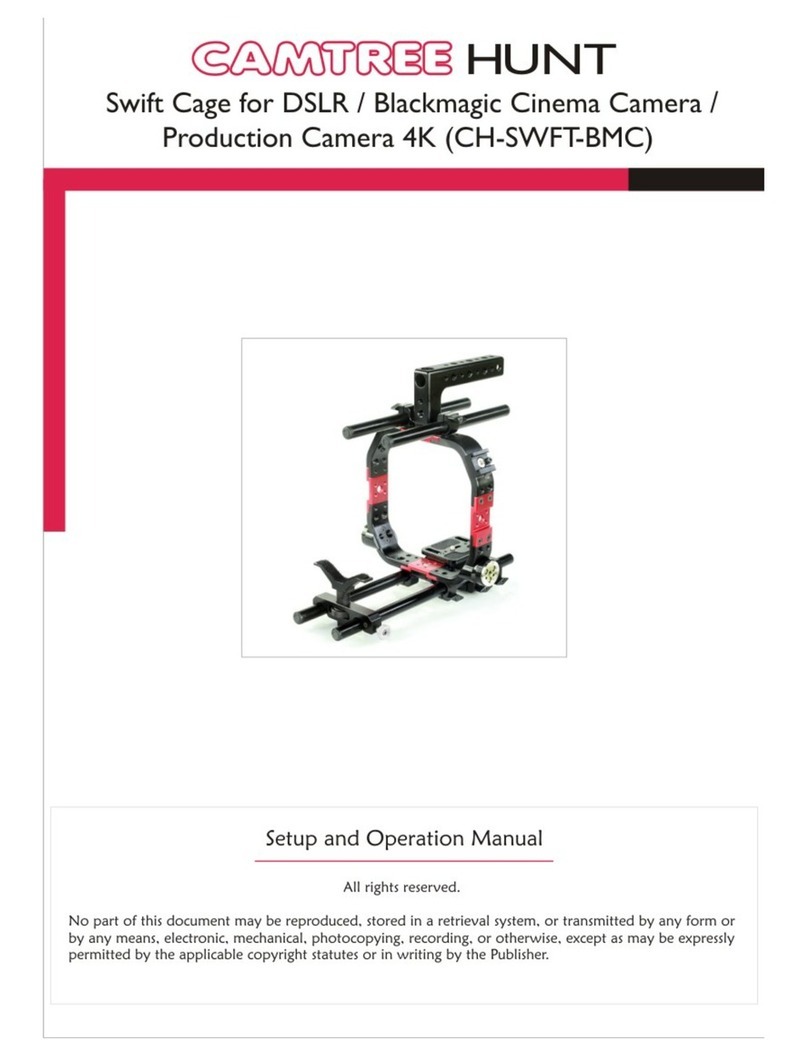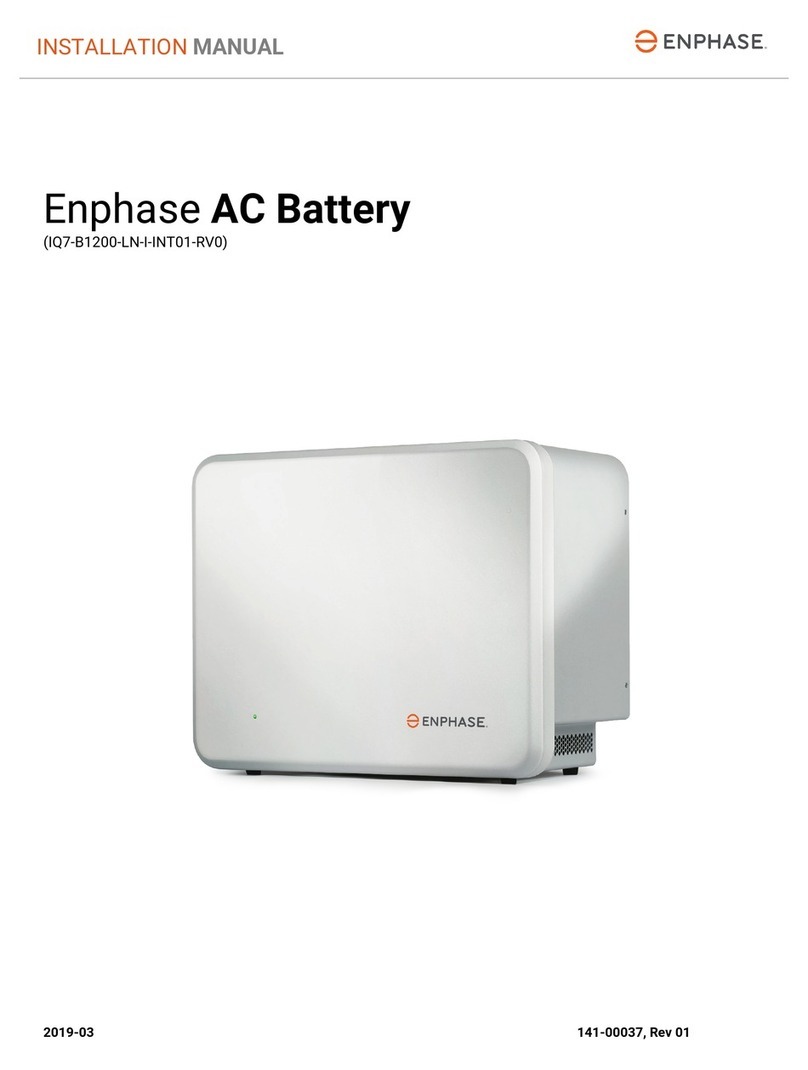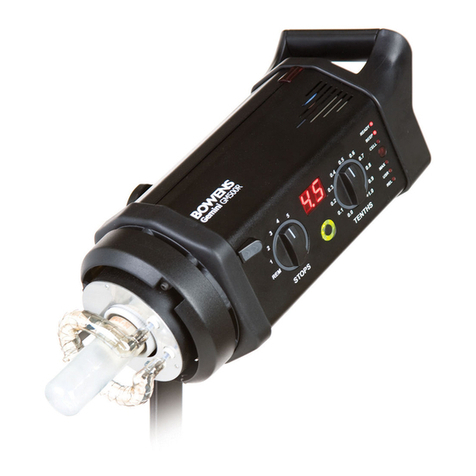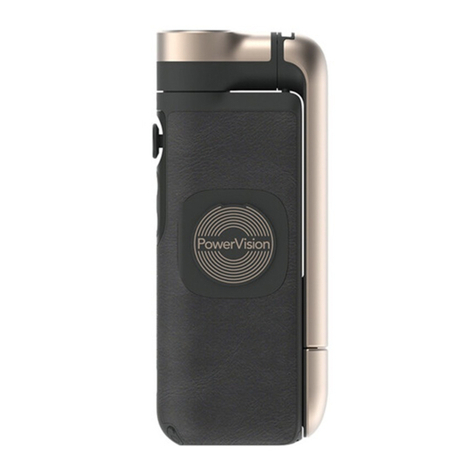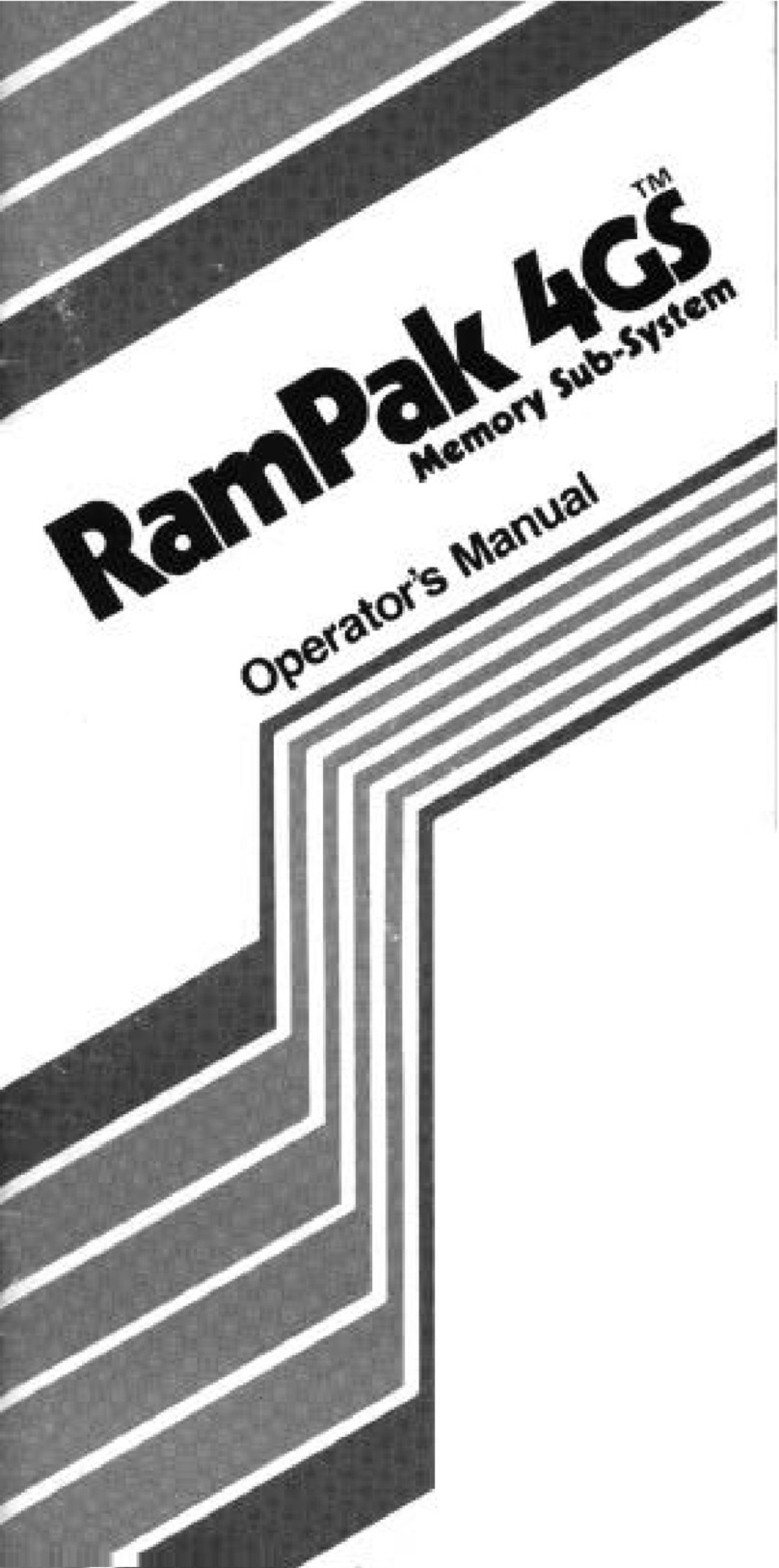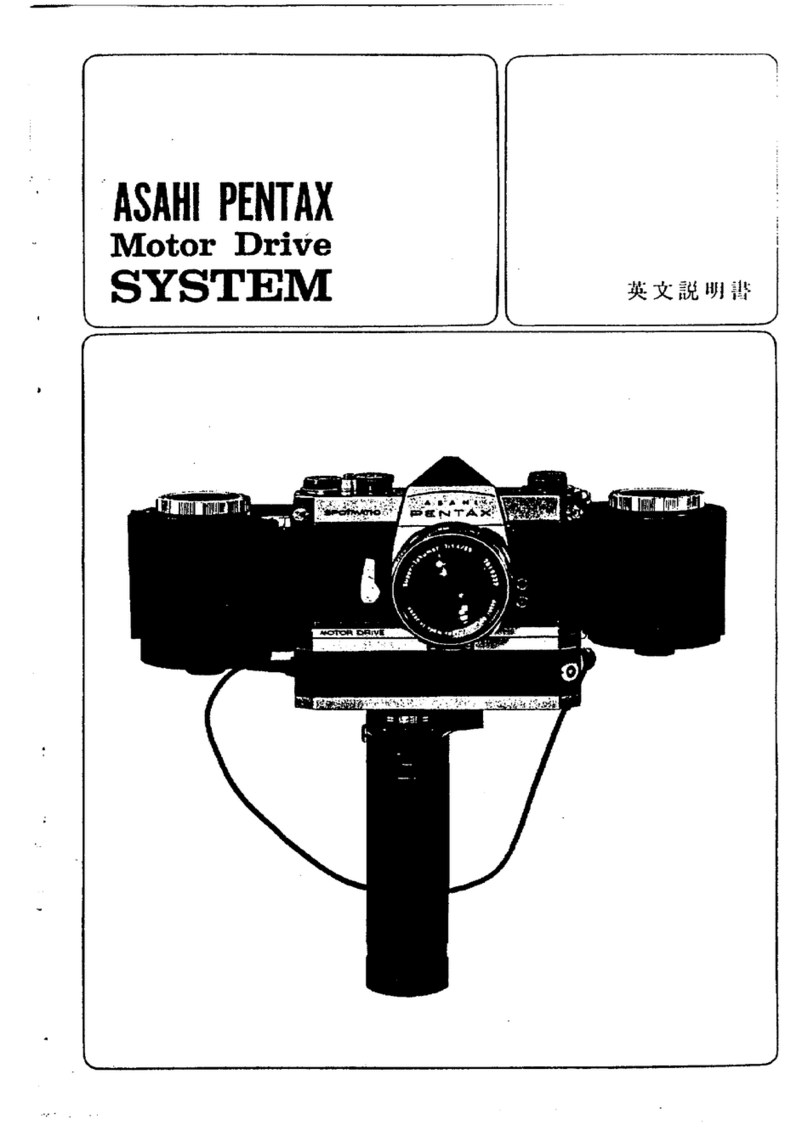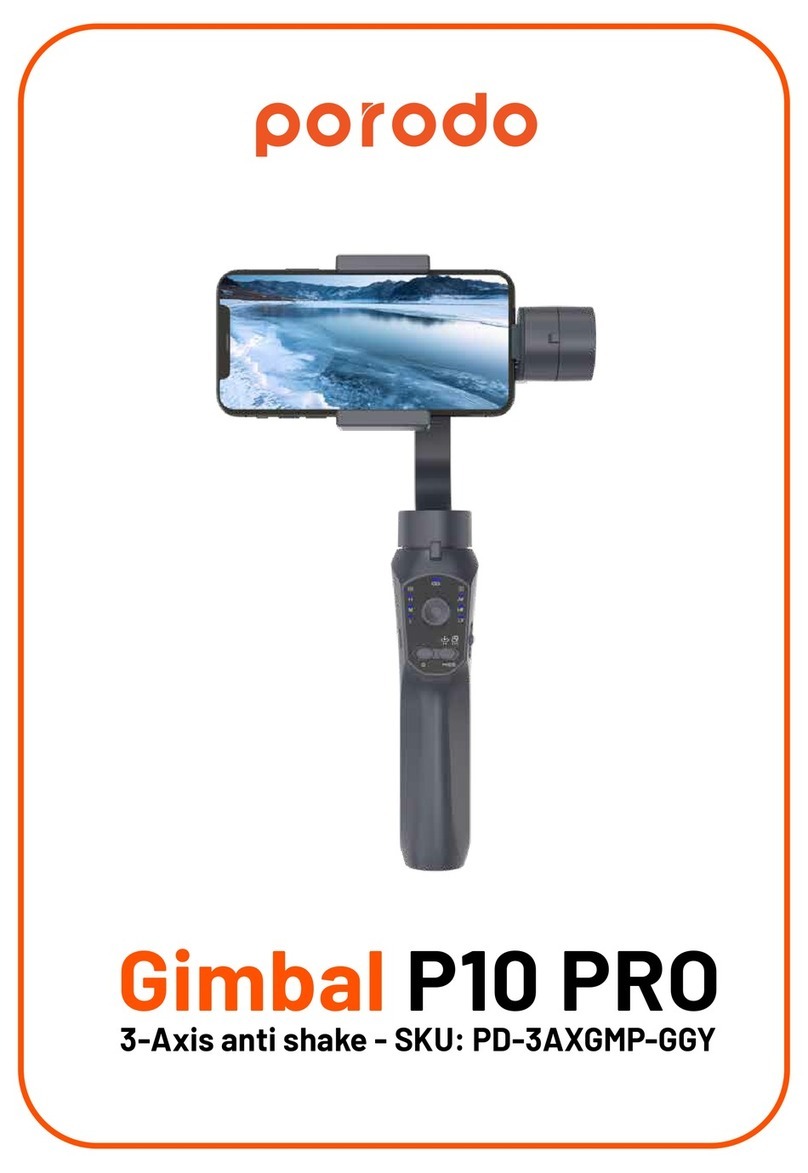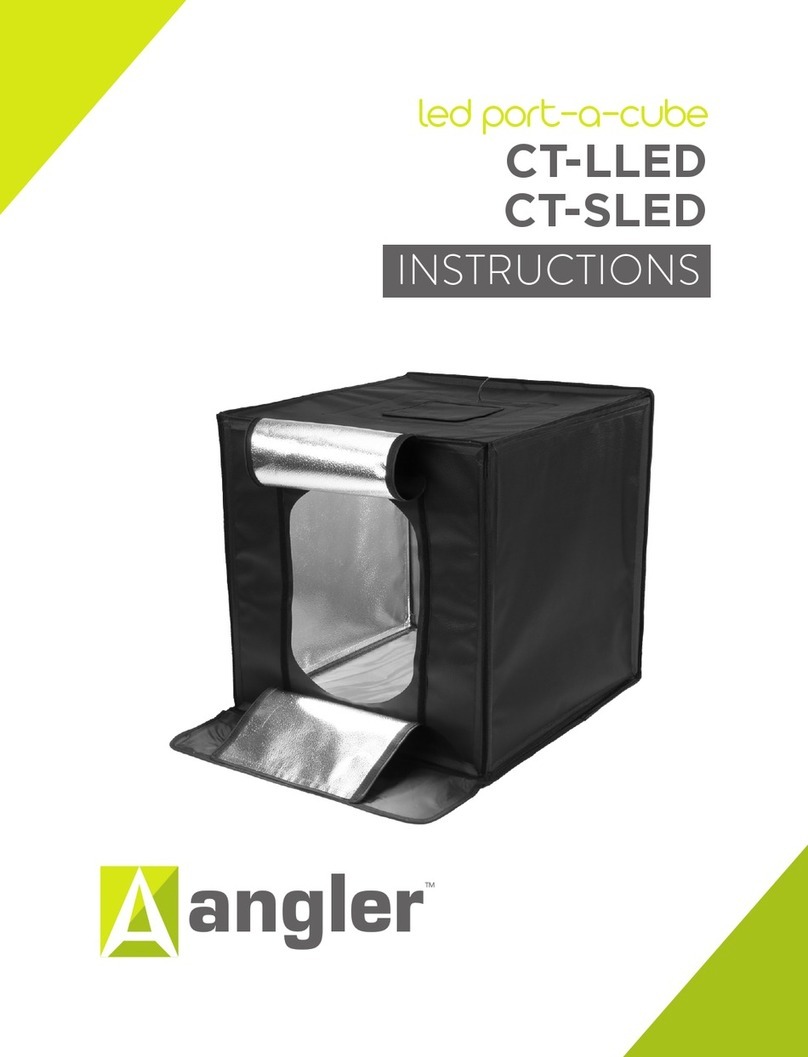GITER G2500-48 User manual

INSTALLATION MANUAL
BATTERY MODULE
G2500-48
G2500-24
Giter Co., Ltd.
T+86 512 6828 7609
W www.giter-ess.com
808-812, Building 10A, Zilang Science and Technology City, 60 Chongzhou Avenue,
Economic and Technological Development Zone, Nantong,Jiangsu Province, 226006
Version:V1.1

Copyright Statement CONTENT
This manual is under the copyright of GITER Co., Ltd, with all rights reserved. Please keep the
manual properly and operate in strict accordance with all safety and operating instructions in this
manual. Please do not operate the system before reading through the manual.
Version Information
Version Date Content
V1.0 20201110 New
1. Introduction
1.1 General precaution
2. Installation
2.1 Scope of delivery
2.2 GTE battery
2.3 Limitation of liability
2.4 Installation of the battery
2.4.1 Installation site and environment
2.4.2 Unpacking the box
2.4.3 Installation and wiring
3. System operation
3.1 Power on/off
4. Maintenance and fault handling
4.1 Routine maintenance
4.2 Handling of other faults and abnormal phenomena
4.2.1 Unable to turn on
4.2.2 Shut down immediately after turn on
4.2.3 Unable to charge
4.2.4 Unable to discharge
4.2.5 No communication between battery and upper controller (if any)
4.2.6 Unable to turn off
4.2.7 Outer light is always on
5. Appendix
5.1 Specification
01
01
02
02
02
06
06
06
06
07
11
11
11
11
11
11
11
12
12
12
13
13
13
13

GTE battery
CAUTION:
1. It is strictly prohibited to put the battery in water or fire, so as to avoid explosion or other
dangers and endanger personal safety;
2. Please connect the wires correctly during installation. Do not connect the positive and
negative poles back. Do not connect lithium batteries in series;
3. Do not puncture the battery by needling, hammering, trampling or other means;
4. Before installing or removing the equipment, ensure that the power system is not live and
that the battery equipment is turned off.
5. In case of fire, please inform the fire department immediately and use lithium battery fire
extinguishers that meet the national requirements to put out the fire。
6. If the battery is improperly lifted or dropped while being removed during transportation, it can
cause personal injury.
7. Under any circumstance, non-our company or technicians authorized by this company
should not disassemble any part of the system without authorization to prevent danger or
injury to your personal safety, and the resulting equipment failure is not covered by the
warranty.
During standard operation, no electrolyte shall leak from the battery pack and no toxic gases
shall form. Despite careful construction, if the Battery Pack is damaged or a fault occurs, it is
possible that electrolyte may be leaked or toxic gases formed.
Do not install the system in any environment of temperature below -10°C or over 50°C and in
which humidity is over 85%.
Do not touch the system with wet hands.
Do not put any heavy objects on top of the system.
Do not damage the system with sharp objects.
Do not install or operate the system in potentially explosive atmospheres or
areas of high humidity.
Do not mount the inverter and the battery pack in areas containing highly
flammable materials or gases.
If moisture has penetrated the system (e.g. due to a damaged enclosure),
do not install or operate the system.
Do not move the system when it is already connected with battery modules.
Secure the system to prevent tipping with restraining straps in your vehicle.
The transportation of GTE battery must be carried out by professionals ,These instructions
shall be recorded and repeated.
Don't smoke when close to the vehicle.
In case of contact with the electrolyte, flush the affected area with clean water immediately
and consult your doctor immediately.
CAUTION
WARNING
01 02
1. Introduction
1.1 General precaution
2.1 Scope of delivery
2.2 GTE battery
2.2.1 Dimensions and specifications
2. Installation
Check the following parts list to ensure it is complete.
GITER delivers a total system separately on site to client, this consists of:
Screws
M5*10(X2)
Battery (X1)
Copper Busbar (X2)
Screws M4*8(X10) Screws M6*12
(x4)
SC25-8 OT
Terminal (x2)
Communication
(x1)
Hanging ear
(X2)
M6 Buckle nut
(X4)User manual
403.4
400
421.2
130.9
457.2

03 04
2.2.2 Interface 2.2.2.2 Error and protection code
2.2.2.1 LED SOC display
In normal condition, LED display indicates the SOC as the figure below:
Figure 1 G2500-48 Interface
Item Description Item Description
1
2
3
4
5
6
7
8
Ground(with screws)(x2)
Communication Port
DIP Switch
LED SOC Display
Power Switch
Battery Circuit Breaker
Battery Positive port
Battery Negative port
LED outer light Protection code LED display Description
1
3
4
5
6
8
9
11
Temperature difference
High temperature
Over-current charge
Over-current discharge
Cell under voltage
1
1
2 3 456
7 8
LED outer light
State
Standby:
Green light flickers every
1s
Work:
Green light flickers every
10s
Green light
flickers every
3 seconds.
LED outer light SOC Description
SOC<5%
5%≤SOC<25%
25%≤SOC<50%
50%≤SOC<75%
75%≤SOC<95%
SOC≥95%
Charging in low-temperature
environment
Discharging in low-temperature
environment
It's actually in normal working mode, when the protection code appears. And the battery will
automatically resume working, once given the all-clear.
In the working mode, if the protection code 09 appears, turn on the Power switch 5 times within 10
seconds to let BMS force close the MOS so that the inverter can detect and charge the battery.
Battery charged to limited

05 06
Error code: 2.3 Limitation of liability
2.4 Installation of the battery
2.4.1 Installation site and environment
2.4.2 Unpacking the box
LED outer light Error code Description Troubleshooting
Red light
flickers every
3 seconds.
Error 01
Error 05
Error 07
Error 08
Error 09
Error 10
Error 11
Error 12
Error 13
Any product damage or property loss caused by the following conditions Giter does not assume any
direct or indirect liability.
Product modified, design changed or parts replaced without Giter authorization;
Changes, or attempted repairs and erasing of series number by non Giter technician;
System design and installation are not in compliance with local standards and regulations;
The product has been improperly stored in dealer’s or end user’s premises;
Transport damage (including painting scratch caused by movement inside packaging during the
shipping). A claim should be made directly to shipping or insurance company as soon as the
container/packaging is unloaded and such damage is identified;
Failure to follow any/all of the user manual, the installation guide and the maintenance
regulations;
Improper use or misuse of the device;
Insufficient ventilation of the device;
The maintenance procedures relating to the product have not been followed to an acceptable
standard;
Force majeure (violent or stormy weather, lightning, overvoltage, fire etc.).
Damages caused by any external factors.
LED display
Temperature
sen-sor failure
DIP switch
mode difference
BMS disconnect
(slave)
BMS disconnect
(master)
Software version
inconsistent
MOSFET over
temperature
Multi master
SN missing
MOSFET error
Please restart the
battery.
If the problem is not
resolved, please
contact GITER after
sales team.
Please keep
consistence of DIP
switches then restart
the system.
Please reconnect the
communication cable.
Please contact
GITER after sales
team.
Please reconnect the
communication cable.
Please contact Giter
after sales team.
After shutting down
the battery system,
please restart all
batteries within 30s.
Please turn off the
battery and turn on
the battery after
about 2 hours.
This manual describes the basic steps of how to install and set up.
Take out the battery from the packing box and check whether the accessories are complete, as
shown in Figure 2.
The following location are not allowed for installation:
• sites with high humidity, or where there is condensation;
• sites which are salty and where humid air can penetrate;
• flooded areas.
• earthquake areas –additional security measures are required here;
• sites with explosive atmosphere;
• sites with direct sunlight;
• sites with extreme change of ambient temperature;
• sites with highly flammable materials or gases;
• sites with a potentially explosive atmosphere.

Note
Figure 2 Unpacking the Battery
Figure 4 Install battery module & connect copper
busbar (Take G2500-48 as an example)
Figure 5 Communication cable connection & DIP Switch
(Take G2500-48 as an example)
07 08
2.4.3 Installation and wiring
2.4.3.1 Installation with cabinet
The following actions should be carried out before wiring:
1. Ensure that the Power switch of all batteries is OFF;
2. Switch off all relevant power supply. Step 2: As shown in Figure 4, put the battery into the cabinet, tighten the four-angle screws
(M6*12 screw, torque: 5 N.m); and fix the copper busbar between the battery modules with
3#cross screwdriver (M8; torque: 12 N.m).
Step 1: As shown in Figure 3, fix the hanging ear on both sides of the battery with 4 screws.
(Torque: 1.6 N.m; Tools: T20 screwdriver )..
1、Serial connection between batteries is not allowed;
2、The power cable of the cross-sectional area connected to the inverter should be at least 35
mm2(About AWG 2), and temperature resistance ≥90°, rated voltage ≥500V.
Fix the screws for the copper busbar
Fix the screws for
the hanging ear
INV-
INV COM
DIP Switch
INV+
WEON
1 2 3 4
WEON
1 2 3 4
WEON
1 2 3 4
WEON
1 2 3 4
WEON
1 2 3 4
465
57.1
37.7
429

09 10
2.4.3.2 Installation with base
(Accessories need to be purchased separately)
Step 1: As shown in Figure 7, place the battery on the base and tighten limit brackets located at
the four corners (screw: M4*10 outer hexagonal and internal torx combination screw; torque:
1.6 N.m; 10pcs in total )
Step 2: As shown in Figure 7, stack the second battery neatly on the first one and tighten the
limit brackets with a T20 screwdriver(screw: M4*10 external hexagonal box Combination screw ;
torque requirement: 1.6 N.m; 10pcs ).
Step3: Refer to Step 2 and stack the battery in turn, as shown in Figure 9。
Step 3: As shown in Figure 5, connect the communication cable, and dial code after the
connection. Switch "2" for the bottom battery, and "4" for all other batteries.
Note
The communication wiring between the battery and the inverter has a special sequence.The
requirements of communication wiring connection are shown in Figure 6.
Note
A bracket (including a left bracket and a right bracket) is used for each 2 batteries
RJ45 connector
on the battery side
RJ45 connector
on the inverter side
Figure 6 Communication wiring&Kodak name
Figure 7 Install the first battery
Figure 8 Install the second battery
Figure 9 Stack and install 6 batteries
(Take G2500-48 as an example)
Left bracket
Right bracket
The
adapted
inverters
are provided by Kodak OG range.

11 12
3. System operation
4. Maintenance and fault handling
3.1 Power on/off
4.1 Routine maintenance
4.2 Other faults and abnormal phenomena
4.2.1 Unable to turn on
Check all power cables and communication cables carefully.
Common faults and corresponding troubleshooting are listed below.
POWER ON: Switch on the Battery Breaker, turn the Power Switch (Rebound button) "ON" and hold
for 1-2 seconds. Then the battery module will activate and the LED display will light up.
POWER OFF: Turn the Power Switch (Rebound button) "ON" and hold for 5 seconds, and the
battery will be turned off.
Batteries should be turned on in the correct order to avoid damage
• Check if the environment situation meet the requirements of the battery.
• Check whether the charging and discharging function of the battery is normal. When one of the
following situations happen, it is necessary to charge the battery in time: the battery protection code
09 appears, the battery is often under charged, and the battery is stored for more than 3 months.
• Check the battery and its appearance, terminals, cables, LED lights, etc.
Fault Troubleshooting Description
Turn on the Power
switch and hold for 2
seconds, while the LED
light isn't on in 3
seconds.
Check if there
resistance when you
turn on the switch.
If the switch has no
resistance, please contact
customer service.
4.2.3 Unable to charge
Fault Troubleshooting Description
The battery cannot be
charged normally while it
is not fully charged with
no LED protection code
nor error code.
1.Check if the battery has
been turned on;
2.Check if the power cables
are connected correctly;
3.Check if the battery breaker
is ON;
4.Check if the ambient
temperature is within the
operating range.
If the battery still cannot
be charged normally after
these steps, please
contact customer service.
4.2.4 Unable to discharge
Fault Troubleshooting Description
The battery cannot be
discharged as it should
while it is still alive with no
LED protection code nor
error code.
1. Check if the battery has been
turned on;
2. Check if power cables are
connected correctly;
3. Check if the battery breaker is
on;
4. Check if the ambient
temperature is within the operating
range;
5. Disconnect the power cables
and test the battery output voltage.
If the voltage is too low, please
charge immediately. If there is no
voltage, please contact customer
service. If the voltage is normal,
you can restart the battery.
If the battery still cannot
be discharged normally
after these steps, please
contact customer service.
4.2.5 No communication between battery and upper controller (if any)
Fault Troubleshooting Description
The upper controller failed
to detect the batteries
1. Confirm if the battery has been
turned on;
2. Check if the power cables are
connected correctly;
3. Check if the communication
cables are connected correctly
and whether they are damaged;
4. Check if the DIP Switch 2 is
set "ON", which is on the farthest
battery away from the upper
controller;
5. Restart the batteries.
If the battery still cannot
be used normally after
following the steps, please
contact customer service.
4.2.2 Shut down immediately after turning on
Fault Troubleshooting Description
Turn on the Power switch and
hold for 2 seconds, while the
LED light goes off again after 8
seconds.
Check if the switch can
bounce back.
If the switch cannot
bounce back, please
contact customer service.

5.1 Specification
13
4.2.6 Unable to turn off
Fault Troubleshooting Description
Turn on the Power
switch and hold for 5
seconds, while the LED
light is still on.
1. Confirm whether there is
resistance when the switch is
pressed;
2. Confirm whether the outer
light is always on.
If the switch has no
resistance or the outer
light is always on, please
contact customer service.
4.2.7 Outer light is always on
5. Appendix
Fault
Items G2500-48 G2500-24
Troubleshooting Description
The LED outer light is
always on and the status
light is off.
Turn on the Power switch
and hold for 5 seconds.
Observe the status of the
LED outer light.
If the LED light keeps on
after the troubleshooting,
please contact customer
service
Nominal voltage
Nominal charge/discharge current
Charging voltage limit
Discharge voltage limit
Nominal capacity
Usable capacity
DoD
Max. Number in parallel
Communication interface
IP protection
Weight
Operating temperature range
Certification
51.2V
25A(0.5C)
57.6V
48V
25.6V
50 A(0.5C)
28.8V
24V
2.56KWh
2.43KWh
95%
6pcs
RS485/CAN
IP21
27kg
0℃ ~ 50℃* (Charge) -10℃ ~ 50℃* (Discharge)
UN38.3
*When the temperature is below 0℃or above 40℃, the performance will be limited.
Other manuals for G2500-48
1
This manual suits for next models
1
Table of contents

